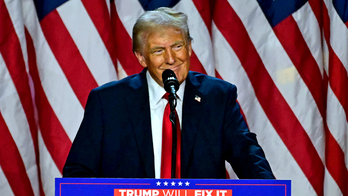How did Uruguay cut carbon emissions? The answer is blowing in the wind
Back in 2007, Uruguay had a massive problem with no obvious fix. The economy of this country of 3.5 million people was growing, but there wasn't enough energy to power all that growth. There was energy rationing, and people's power bills kept going up.
"It was difficult for us to cope," Ramón Méndez Galain remembers. "It was difficult to get electricity. For some time, we were beginning to have blackouts."
Méndez Galain had trained as a particle physicist. "When you are trained as a scientist," he says, "you are trained to see an unsolved problem, and [to try] to find an explanation and a solution. So I used, if you wish, my scientific skills I had developed in order to face this difficulty with the same strategy."
He started researching different potential paths for Uruguay's energy future and reaching out to experts he knew around the world. Ultimately, he wrote up an entire plan for how Uruguay could change its energy mix so that it relied almost entirely on renewable energy. There would be less pollution, it would be better for the climate, and, he thought, in the long run, it would be the most economical choice Uruguay could make.
And then one day, Méndez Galain received a phone call in his office.
"He said, 'Oh, hi Ramón," Méndez Galain recalls. "I've been reading what you said. I'm talking with the president, and we wanted you to implement that strategy.'"
The president of Uruguay had seen Méndez Galain's plan and was now inviting him to become Uruguay's new national director of energy. Méndez Galain accepted.
Countries all over the world have spent the last decade announcing lofty goals to reduce the emissions that cause climate change. In the United States, President Biden has set a goal to reach 100 percent carbon pollution-free electricity by 2035. But Uruguay has almost reached that goal already. In a typical year, 98% of Uruguay's grid is powered by green energy.
Méndez Galain's plan was built around two simple facts about his country. First, while there wasn't a domestic supply of fossil fuels like coal or oil, there was a great deal of wind. Second, that wind blew over a country that was, to a great extent, composed of uninhabited agricultural land. His vision for Uruguay's energy future was to cover that empty land with hundreds of wind turbines.
To solve the question of how to pay for all those turbines, Méndez Galain came up with a variation on an approach used by some electric utilities in neighboring Brazil. Those utilities were run via public-private partnerships, in which the utilities handled energy generation, while private companies were in charge of power distribution and customer service. Méndez Galain's scheme involved reversing that relationship, so that private companies would be in charge of setting up and maintaining the wind turbines that would power Uruguay's grid, while the public utility would continue to distribute that energy to its customers
His scheme had the built-in advantage of pushing the billions of dollars in upfront cost to construct all those wind turbines onto the private companies. In exchange, the public utility would agree to buy all the energy those turbines produced at a set rate for 20 years.
"Investors need to have the security that their investment will be paid back," explains Méndez Galain, "and for that they need a certain amount of time."
In 2009, Uruguay started holding auctions in which different wind companies from around the world came to bid on how cheaply they'd sell renewable energy to the country.
In 2011, Uruguay held an auction intended to secure 150 megawatts of new wind power, which would have represented about 5% of the country's energy generating capacity. After more than 20 different companies threw in their bids, Méndez Galain and his team decided to radically accelerate their timeline for the country's energy transition.
They accepted far more bids than they had originally planned, signing contracts that increased Uruguay's capacity to generate electricity not by 5%, but by more than 40%.
Within a few years of Méndez Galain receiving that phone call inviting him to become the national director of energy, he had achieved what he had set out to do. Uruguay's energy grid was powered almost exclusively by domestically created, renewable energy, and, adjusted for inflation, consumer prices had gone down. Today, there are more than 700 wind turbines installed across Uruguay's countryside.
"It was absolutely a complete transformation," says Méndez Galain. "So many people talk about what happened as an Uruguayan energy revolution. Because really it was a revolution."
Today's show was hosted by Erika Beras and Amanda Aroncyzk. It was produced by Willa Rubin with help from Emma Peaslee. It was engineered by Maggie Luthar, fact-checked by Sierra Juarez and edited by Keith Romer. Alex Goldmark is our executive producer.
Help support Planet Money and get bonus episodes by subscribing to Planet Money+ in Apple Podcasts or at plus.npr.org/planetmoney.
Always free at these links: Apple Podcasts, Spotify, Google Podcasts, NPR One or anywhere you get podcasts.
Find more Planet Money: Facebook / Instagram / TikTok / Our weekly Newsletter.
Music: Audio Network - "Fruit Salad," "Caviar," and "Star Alignment"
Disclaimer: The copyright of this article belongs to the original author. Reposting this article is solely for the purpose of information dissemination and does not constitute any investment advice. If there is any infringement, please contact us immediately. We will make corrections or deletions as necessary. Thank you.







